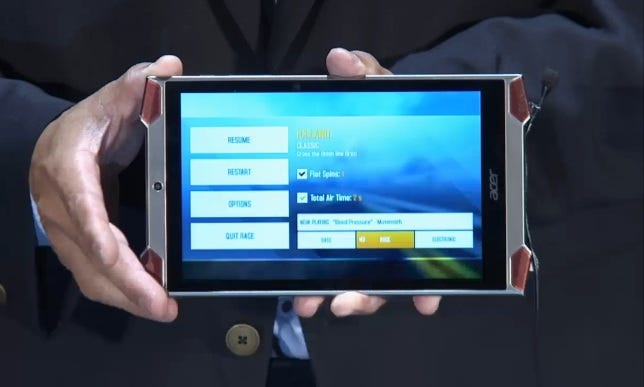
Intel
Intel is hoping to bring better graphics, media and video performance to mobiles and PCs with a new lineup of processors that boosts its fifth-generation Intel Core range.
The chip manufacturer kicked off Computex in Taipei today with an opening keynote, talking up the implications of improved processing power and the future of digital devices. While Computex has brought 130,000 people to the Taiwanese capital to see what will shape computing in 2015, Intel was clearly setting the agenda for what manufacturers will be packing inside their devices for the year ahead.
After unveiling its fifth-generation processor family, codenamed “Broadwell,” at CES in Las Vegas earlier this year, Intel announced that it had “augmented” its lineup with five new desktop processors and five mobile processors, all geared towards media- and graphics-hungry consumers.
The promise of a better visual experience is underpinned by Intel Iris Pro Graphics 6200, which Intel is dubbing its “most powerful client processor graphics and media engine.” We’ve known about Iris Pro for some time — it’s Intel’s solution for better gaming, faster video editing and lower energy use, without the need for an external graphics card — but now we’re seeing just what this new iteration will bring.
Intel has brought Iris Pro Graphics to a desktop processor in the LGA form factor for the first time — that’s essentially chip-talk for changing the processor’s physical structure to ensure a steadier power supply and a sturdier build under the PC’s hood.


Screenshot by Claire Reilly/CNET
To talk about the better performance we’ll see with the new range, Intel is promising that its flagship desktop processor, the memorably-named Intel Core i7-5775-C, “delivers up to 35 percent better media performance and over 2x better graphics performance” than the previous fourth-generation chip with the older HD graphics processor.
While there’s plenty happening at the micro level, it all comes down to the products we’ll see come from the chip changes. On that front, Intel says consumers will see “full PC performance in a broad range of desktop form factors, including smaller and thinner Mini PCs and desktop all-in-ones.
In the mobile space, Intel is targeting “gamers and creators on the go” with 5 new mobile processors. Once again, the flagship Core i7 will offer up to 95 percent better media performance and up to twice the 3D graphics performance compared to the current generation processor.
The processors are expected to be system-ready within 30 to 60 days, and we can expect a steady flow of product releases to come off the back of that launch.
Intel also announced new enterprise-focused products, including a range of Xeon processors targeted at graphics-intensive video applications. Geared towards data centres and cloud-based processing, Intel is promising Xeon will deliver better performance for video transcoding, 3D graphics and HD video streaming — delivering up to 4,300 simultaneous HD streams in real-time.
And finally, because no Computex is complete without talk of the Internet of Things, Intel has announced an expansion of its IoT Gateway product range. The company says Gateway will bring costs down for developers and manufacturers, allowing them to bring connected products to market more quickly and to simplify the process of actually interconnecting those devices.




